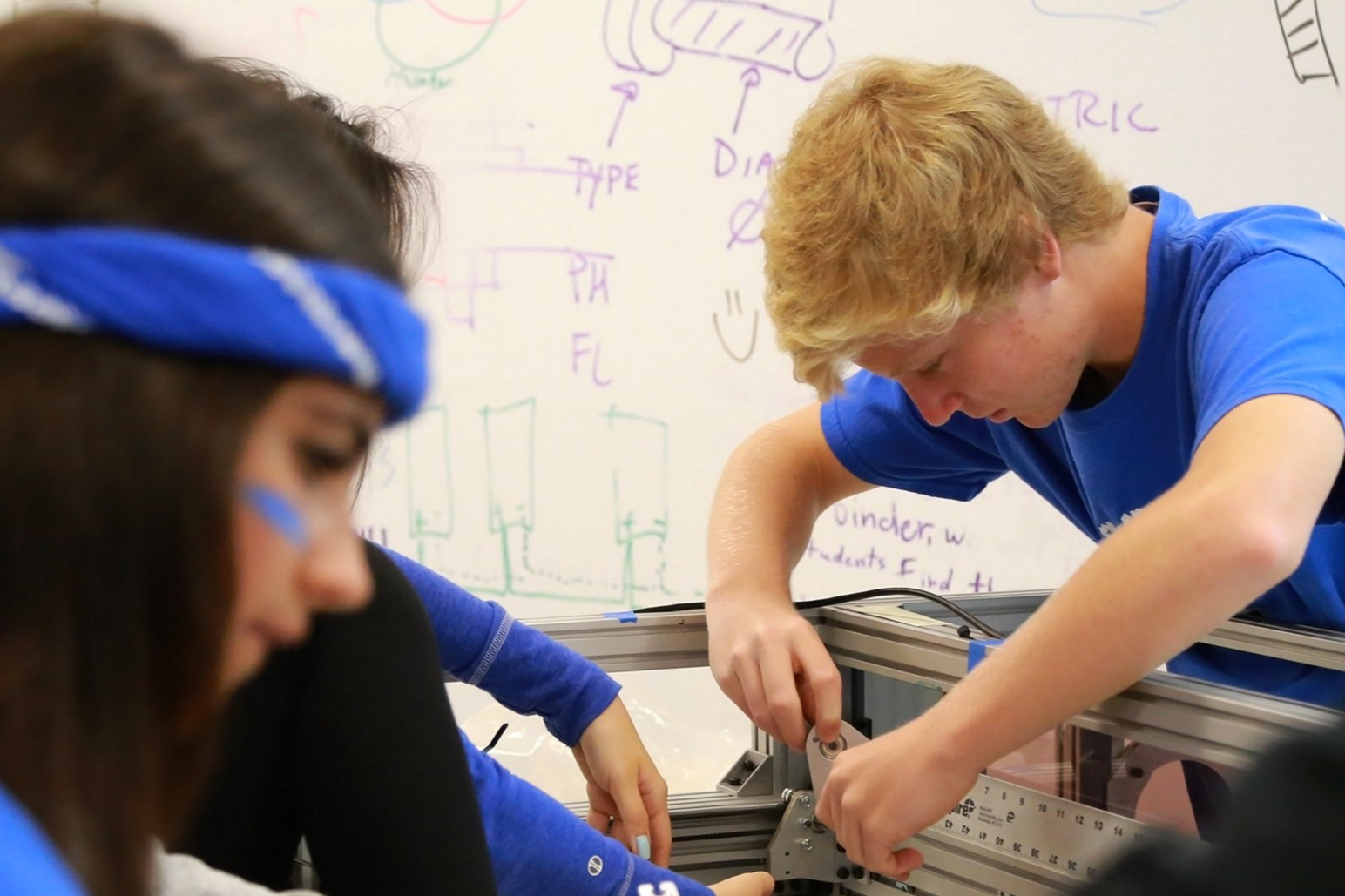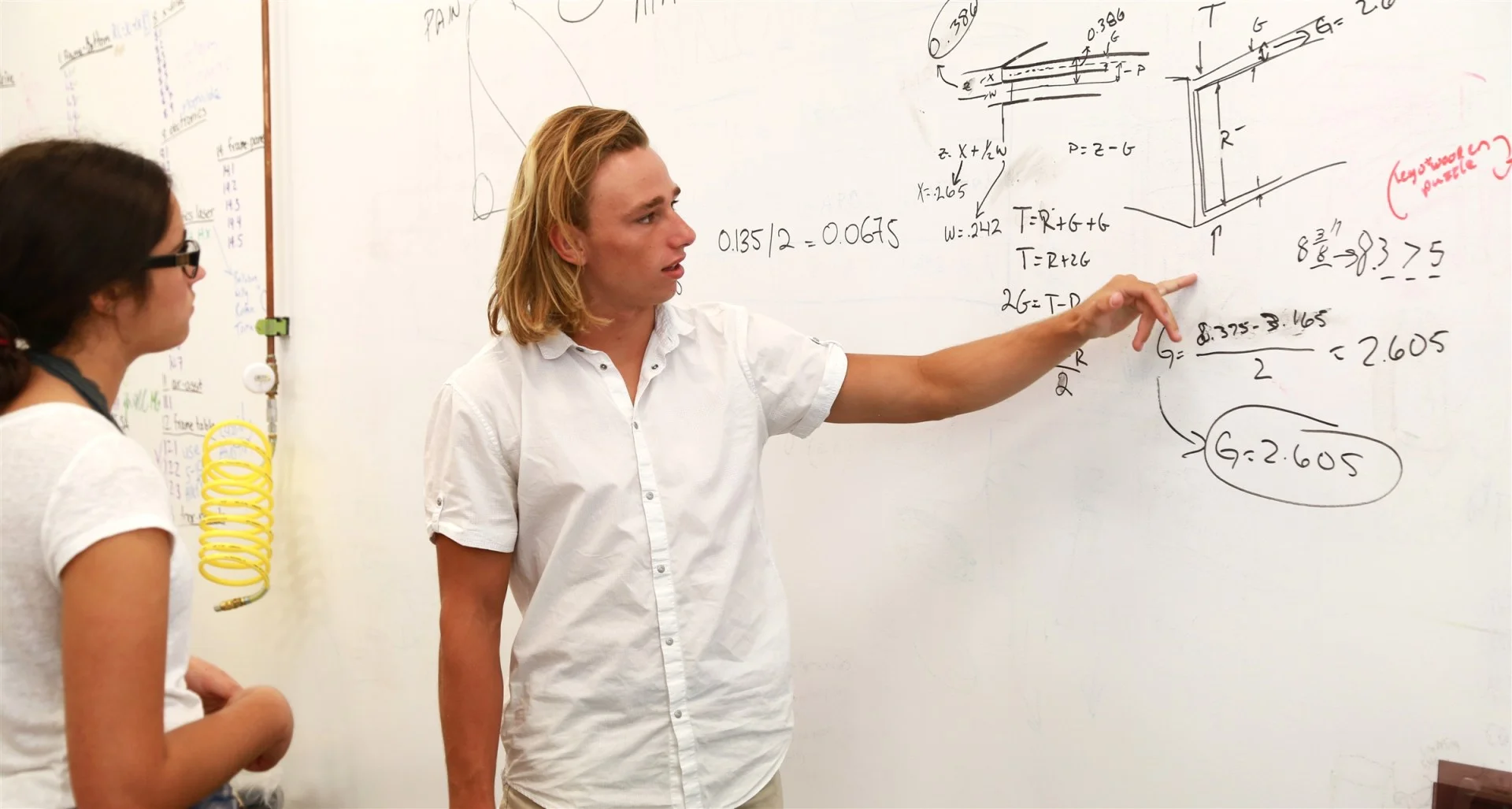“We believe that a 21st-century education must prepare students for the world they will enter; not the world that existed in the past. In the present and future “Economy of Ideas”, people will not be judged solely on technical abilities or credentials, but on curiosity, creativity, and execution. Therefore, through this lens, we believe that Innovation & Human-Centered Design should be a core component of education at La Jolla Country Day School.”
Human-Centered Design
A distinctive characteristic of our program is that we believe innovation and successful design rely on contextual research, an understanding of human behavior, and evidence-based design choices.
The investment that comes along with ethnographic research and user testing is not something that is often taught during professional development courses, let alone in K12 education. It is a time-intensive endeavor that sometimes only shows incremental improvements in a design. However, the cumulative effect of these incremental improvements, and the empathy we gain for the user are the exact benefits that create user-friendly solutions. We utilize a process that has a grounding in the new Science of Design, and allows for the creation of artistic, emotional, and pleasurable solutions.
Diverse backgrounds
Because our program trains students to study human behavior, in addition to teaching hard, technical skills, it appeals to students who may not think of themselves as traditional engineers. Additionally, our faculty come from a range of backgrounds.
Artists, social scientists, and computer scientists all bring now-vital skills to the table. We offer courses in Art + Technology, Interaction Design, Human-Computer Interaction, and more, to highlight these cross-divisional collaborations.
Collaborations with business & academia
We partner with outside organizations to ground our projects in the world beyond our campus. These collaborations offer the possibility of large-scale adoption and provide expert stakeholders to guide and judge student work.
Our classes have teamed up with CamelBak®, Ottobock®, the San Diego Bomb Squad, and HP®.
We have also worked with The Design Lab at UCSD, a collaboration between Art, Computer Science and Engineering, and Cognitive Science that consists of leaders in Human-Centered Design.
See our program in action
Design Defined
Design is often associated with aesthetics. Although important on one level, it captures a small portion of design. Good design relates and provides value to anyone who interacts with it. This requires studying the users and designing for their needs.
Innovation Defined
Innovation is the ability to identify relevant and non-obvious problems and then develop solutions that (1) resonate with people, (2) are technically feasible, and (3) generate adoption are business feasible.
Our students reach these goals by learning to develop perspective through unique lenses:
People lens
The most important lens, it's concerned with finding the drivers and motivators of people: why they do what they do and make the decisions they make.
We invest time into studying and understanding human behavior through ethnographic research and extensive user testing. A solution that no one wants to use is not a solution.
Technology Lens
The technology lens exists to help determine what technology is available and feasible.
This doesn’t just refer to “high tech”, but also to the tools and materials students have available to build their solutions. This could be satellite technology, a digital platform or maybe a manufacturing process that needs to be utilized. As students get into the ideation and solution stages, the technology lens becomes more critical, helping to determine what can immediately be accomplished versus what development needs to be completed first.
Business/Adoption Lens
Ultimately, we want to build solutions not just for us but for others. In order to be successful, people need to adopt or purchase a solution.
As innovators research and develop solutions, accessibility, distribution and/or price need to be considered. It’s important that a solution resonates with people and is affordable and accessible enough to be widely adopted.






